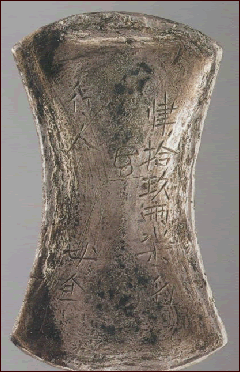Song Engagement with the Outside World
| Original maps from The Metropolitan Museum of Art | |
Northern Rivals: Liao, Jin, Xi Xia, and the Mongols
Even though China was the economic powerhouse of East Asia, with by far the largest population, it was not militarily dominant and had to adjust to a multi-state context.
In this period when the horse was a major weapon of war, the grasslands north of China offered greater military advantage than China’s industrial prowess.
During the Song period, three non-Chinese groups formed states that controlled the grasslands to the north of the Song, where the colder, drier climate favored animal husbandry over crop agriculture. Over the course of four centuries, these Inner Asian states gained more territory occupied primarily by Chinese.
The Khitans (Liao dynasty, 907-1125), beginning in the 10th century, gained a strip of land that included modern Beijing. The Jurchens (Jin dynasty, 1115-1234), after defeating the Khitans in the early 12th century, went on to push Song out of North China. The Mongols (Yuan dynasty, 1279-1368), after defeating the Jurchen in the early 13th century, went on and fully defeated the Song to control all of China.
From the perspective of the Song, these three northern rivals had much in common. They all were master horsemen who were very hard for the Chinese to defeat in open battle. Their basic social structure was tribal, but they had adopted many elements of Chinese statecraft.
Beginning in 1004, the Song made efforts to buy peace by agreeing to make annual payments of money and silk to them in exchange for their agreement not to invade.
The Khitan, Jurchen, and Mongol states all ruled over their Chinese subjects in ways that drew on Chinese traditions, making distinctions between Chinese subjects and other subjects (which included several different northern ethnic groups). All three non-Chinese states made concerted efforts to maintain their own ethnic identity and to keep themselves from being absorbed by the numerically much more numerous Chinese.
More about the Song Dynasty’s Northern Rivals
• Gilded Splendor: Treasures of China’s Liao Empire [Asia Society]
This excellent interactive website explores the complex cultural and religious legacy of the Khitan and their reign over China during the Liao Dynasty (907-1125). Features an extensive image gallery of objects (organized into the following topics: 1) Nomadic Heritage; 2) Chinese Tomb Tradition; 3) Luxuries and Necessities; 4) Religious Life); an interactive tour of two Liao tombs; plus an interactive map of recently excavated Liao sites in Inner Mongolia (with images); two additional historic maps; and a timeline.
• “Dynasty of Nomads: Rediscovering the Forgotten Liao Empire [Archaeology]
A short article about recent archaeological work that reveals the cultural tensions, past and present, between the Han Chinese and Khitan Liao. From the November/December
2007 issue of Archaeology magazine.
• The Mongols in World History [Asia for Educators]
A teaching unit about the Mongol empire. Covers the following topics — The Mongols’ Mark on Global History; The Mongol Conquests; The Mongols in China; Key Figures in Mongol History, The Mongols’ Pastoral-Nomadic Life. With more than 25 full-color images, several online readings, an extensive bibliography, class materials, maps, and related links.
